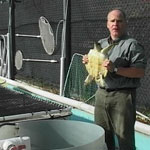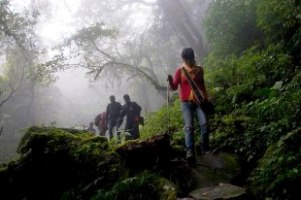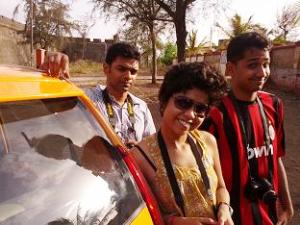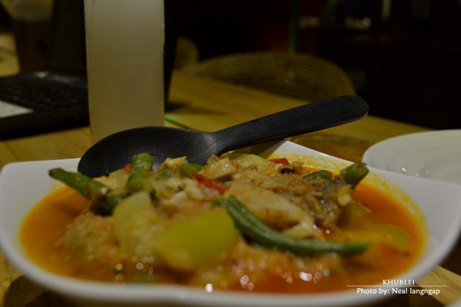Jammu denotes one of the three regions of Jammu & Kashmir state as well as Jammu city. In order to differentiate Jammu (region) from Jammu (city), Tawi has been tagged with Jammu city.That is why Jammu city is called Jammu-Tawi.
The river Tawi originates from Kali Kund glacier near the Kaplas Mountain, Bhadarwah in the Doda district. Having a catchment area of 2168 square kilometers, the river Tawi is 141 kilometers long from its source till Indian border, where it enters into Sialkote district of Pakistan and joins the river Chenab.There is another small rivulet known as Manawar Tawi, originating from Thana Mandiin the Rajouri district of Jammu region which should not be confused with the riverTawi of Jammu city. The river Tawi is referred as Tapi in Duggar Sututi (canto 1 v.10 & canto 11 v.5) written by Shuk Dev Shastri and Toshi or Surya Putri (daughter of the Sun god) in Toshishatkam.
Many myths and beliefs are ascribed to this river. According to local belief, Toshi or Surya Putri took the form of river and was brought to Jammu by Raja Pehar Devta to cure his father. This way the river Tawi is considered as sacred and holy as is generally the case with most rivers of India. Many people perform Mundan (the first hair cut) ceremony of their new born male children at Devsthan Bawa Pehar at village Katal Bata near Nagrota. An ancient Peer Khocave temple dedicated to Lord Shiva is situated on the bank of river Tawi. This cave temple has a legend that Jamvant of Ramayana meditated in this cave. There is Mahamaya temple, Bawe Wali Mata temple (constructed in 1020 A.D.) and Shahi Mosque (constructed by then ruler of Jammu on the visit of Mughal emperor Jahangir & his empress Noor Jahan in 16th Century A.D.) on the bank of this river. These temples give a festive look through-out the year as thousands of devotees throng there to seek blessings of goddess Kali. They tie votive threads at these places of faith.
According to many historians and local belief, it was Raja Jambolochan who had seen a lion and a lamb (born rivals) quenching their thirst at the same place on the bank of river Tawi. This scene was a sign of peace and tranquility, as such aninhabitable place to be lived in. Thus, he founded his capital on the bank of river Tawi in 14th century B.C. It is noteworthy that Raja Jambolochanhad envisioned the cordiality and tranquility at a place (Jammu) much before “a ray of hope” was seen in the Kashmir valley. Braving many storms and vicissitudes of history up till now, the cordiality and fraternity among the people of Jammu is a testimony of Raja Jambolochan’s vision.
Just like Jhelum (Vitasta) which divides Srinagar city in two parts, the river Tawi (Toshi) also traverses throughthe city of Jammu, dividing it into two parts. One part (old Jammu) is hilly while the other part is plain.
In recent years, it has been observed that the flow of water in the river has been decreasing due to recession of the Kali Kund glacier. According to the Hindu belief, water bodies are guarded by astral bodies or deities. If these water bodies are polluted by trash, the guarding bodies gradually leave such places. They cease to be there at all and the water bodies become extinct like the river Saraswati, BadkalLake (Faridabad) to name a few.
It is a matter of great concern that Tawi is losing its pristine glory of historical and mythological importance. The population explosion due to migrations and industrialization is a threat to the Jammu city as well as to the river Tawi. Gone are those days when Jammuites were using the clean and clear water of the river Tawi for drinking purposes. The river Tawi is being defiled by using it as a garbage dump. The river carries entire filth of lanes, drains and gutter waters of Jammu city which is threatening its existence and ecosystem.The heaps of garbage divert the natural course of river during torrential rains. The overflowing water causes peril to the people living close to the banks. Keeping this in view, it would be advisable that the practice of dumping garbage should be stopped without any further delay. Mining in the river bed should be checked and illegal encroachments from the peripheral areas should be cleared. Massive afforestation along the two banks of the river needs to be done and barren places near the river banks be treated with plantation so that river sides are given vegetative cover. The work on Maharaja Gulab Singh Park nearby should be expedited. Since the artificial lake is being constructed, there is ample scope of introducing fish culture in the river which will help in cleansing of the river water.
With all historical background, religious belief and heritage behind, it is our duty to conserve the river for our future generations as the river Tawiis the identification of the city of Jammu.







































